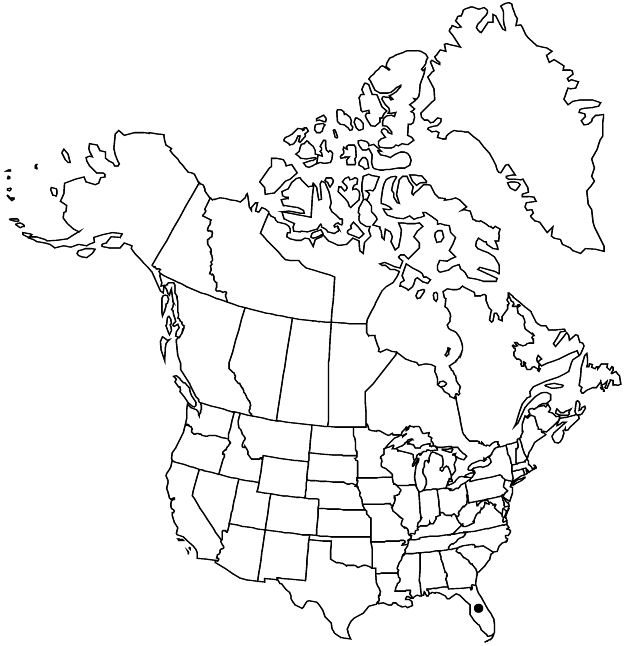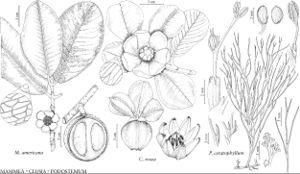Difference between revisions of "Mammea americana"
Sp. Pl. 1: 512. 1753.
FNA>Volume Importer |
FNA>Volume Importer |
(No difference)
| |
Revision as of 22:42, 16 December 2019
Trees often narrow and densely leafy, to 15(–20) m. Leaves: petiole stout, 10–15 mm; blade dark green, elliptic to obovate-elliptic, 9–25 × 5–11 cm, base cuneate to rounded, apex obtuse to rounded or retuse, tertiary reticulation dense. Inflorescences 3+-flowered (staminate) or 1-flowered (pistillate or bisexual). Pedicels 5–15 mm. Flowers: sepals orbiculate-concave, 1–1.5 × 1–1.5 cm; petals 4–6, imbricate, white, orbiculate, 1.5–2.5 cm; filaments basally expanded; ovary pyriform. Berries brown, globose or subglobose, 10–15 cm diam.; mesocarp fleshy, soft when ripe; endocarp reddish brown, fibrous. Seeds to 7 × 5.5 cm.
Phenology: Flowering summer–fall (May–Oct).
Habitat: Wetlands
Elevation: 0–40 m
Distribution

Fla., Mexico, West Indies (Greater Antilles, St. Croix, St. Thomas, Trinidad), Central America.
Discussion
Mammea americana is widely grown for fruit and occasionally naturalized in southern Florida (Miami-Dade County and keys).
Selected References
None.
